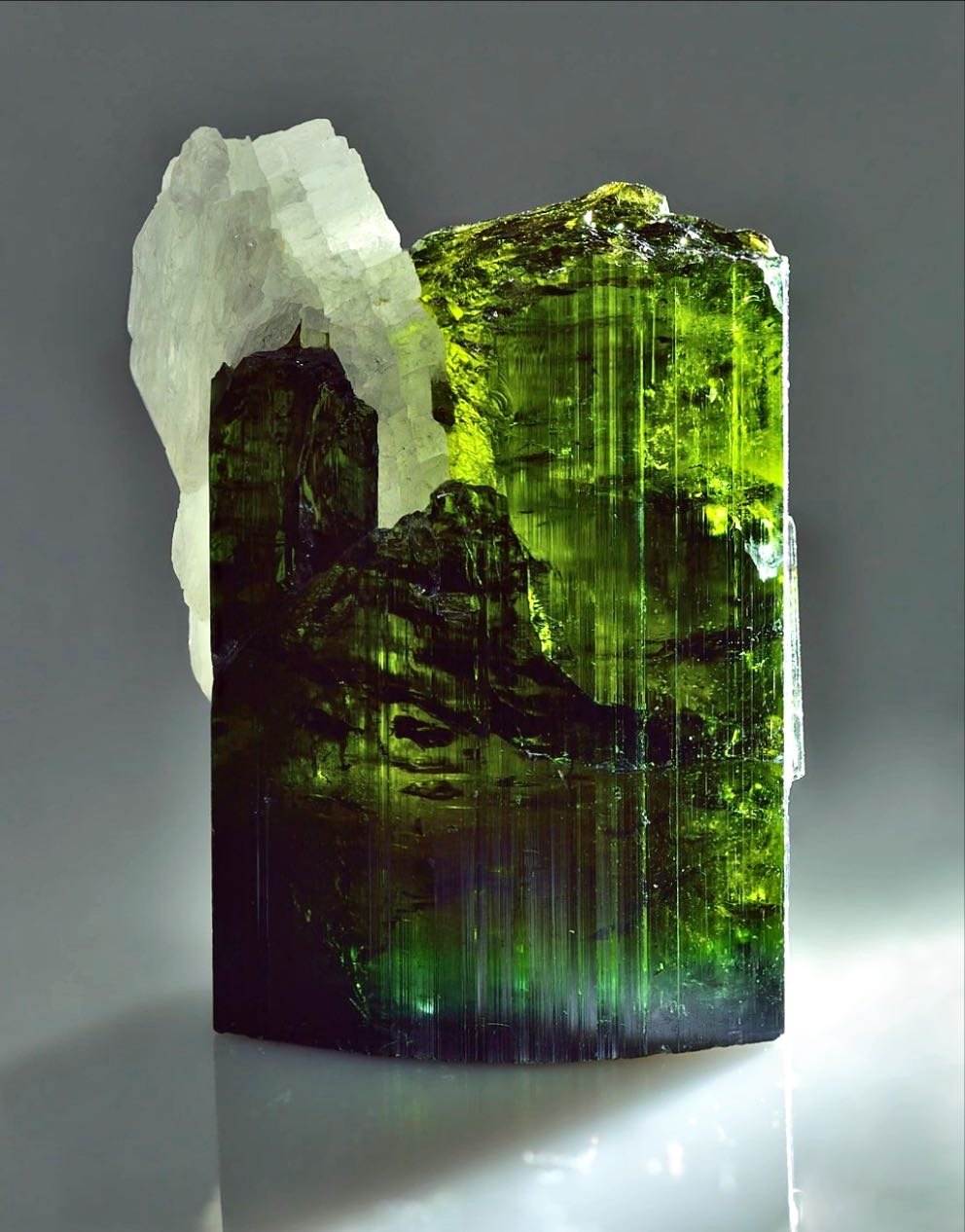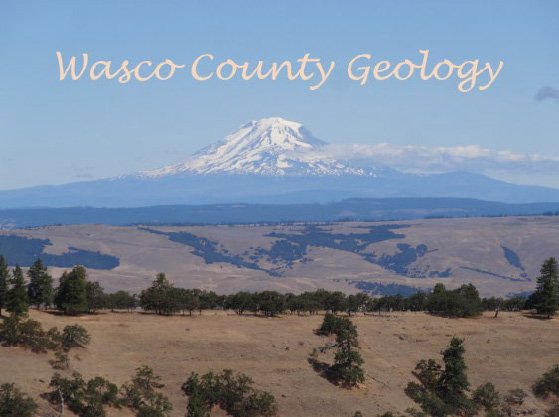From Awards to Tourmalines - recapping the 90th GSOC Annual Banquet
/Banquet date March 9, 2025
This beautiful green elbaite crystal comes from Brazil. Photo courtesy Ivar Lepidus.
GSOC Attendees met once again at the gymnasium of the McMenamin’s Kennedy School facility to celebrate the 90th anniversary of the society’s existence. President Julian Gray and emcee Clay Kelleher got the program started with a brief description of the current affairs of the society. Gray acknowledged the passing of one of the society’s more prominent members, Dr. Paul Hammond. Field Trip Director Carol Hasenberg introduced and presented a lifetime membership award to Janet Rasmussen, a twice Past President and influential member of the society. The lecture was recorded and edited by our fantastic technical team of Paul Edison-Lahm and Gary Joaquin, and you can visit our video archive to view it. And special thanks must go to GSOC Treasurer Barbara Stroud, who has been organizing this event for the last several years.
Julian then introduced the speaker Dr. Barbara Dutrow. Here is a short article about her excellent talk on tourmalines:
Dr. Barbara Dutrow, a Louisiana State University metamorphic petrologist and petrologic mineralogist researcher with an impressive and engaged set of credentials, spoke to the GSOC Annual Banquet audience about her passion for tourmalines and their embedded geologic information. The mineral tourmaline, with its ability to grow large clear crystals in a myriad of colors, yet be tough and durable, makes excellent gemstones. Yet, from a scientific perspective, it is so much more useful. After seeing several geological presentations at GSOC meetings, we all know that zircon crystals can measure time very accurately by comparing the ratios of uranium and lead isotopes in a sample of the crystal, because those ratios record the decay time of uranium to lead (a process with a very long half-life).
Tourmalines, which form in the presence of the element boron over a large range of temperatures and pressures, have other superpowers that stem from the complexity of their crystal structure and chemistry. Their multi-tiered structure of rings of silica tetrahedra linked by other polyhedra can incorporate many of the elements of the periodic table. Thus, a tourmaline crystal can record the chemical composition of its formative environment. The asymmetrical form of the tourmaline crystals imbues them with electrical poles, which vary in intensity with environments of different temperatures and pressure. This, in turn, affects the amount of tourmaline growth at one end of the crystal than at the other end: with differences in chemical compositions too. These differences make the crystal a recorder of temperature in the environments of its formation. And the durability and persistence of tourmaline crystals make these a very useful tool for geologists trying to determine information about the formation of rock and its tectonic setting. The oldest tourmalines known are about 3.8 billion years old.
The complex structure of tourmaline crystals.
Dutrow explained these properties carefully and methodically, and proceeded to give three examples of their usefulness:
The first example was how tourmaline can record the thermal history of their formation during metamorphism, which may, in turn, give clues to the tectonic environment. Two samples of metamorphic rocks, one from Massachusetts and the other from the Alps, were analyzed by Dutrow’s colleagues to have histories with very different temperature changes. The Massachusetts sample recorded growth first in an environment of steadily increasing temperature, then growth in an environment of rapidly decreasing temperature. This history records the burial of the rock, then rapid uplift. The Alps sample recorded growth during a steady temperature environment, then growth during increasing temperature. This is likely caused by rock being buried by a thrusting one tectonic plate over another during continental collision.
The second example was how tourmalines, as a recorder of rock host chemistry, can give clues to an early plate tectonics model of the earth’s history. In this work, Dutrow and her colleagues analyzed tourmalines which grew as the 2.9 billion year old turbidite sediments of the Jardine Metasedimentary Sequence in the Beartooth Mountains of Montana underwent metamorphism. These sediments were derived from 2.9- to 3.6-billion-year-old rocks as recorded by zircons. The tourmalines found in these rocks contained original (core) compositions consistent with eight different host rocks, each bearing evolved felsic minerals. This brings us to the crucial finding of this analysis-if the host rock from which the tourmalines were derived contained such highly evolved, aluminous rock at 3+ billion years, then it is likely that plate tectonics had begun by that point in time. Deep time geologists have been working on the problem of tectonic onset and style during periods of the earth’s history, and small clues like this one can be used to corroborate an early onset tectonic model.
Hydrothermal systems can be great environments for growing tourmalines because boron, an element needed for its formation, is fluid mobile. Fibrous crystals of tourmalines cover other minerals late in the hydrothermal event. By looking at these tourmalines, the chemical composition of the host fluid can be determined, and changes in the fluid composition can be recorded in the growth history of the fibers. In this third example, Dutrow looked at minerals from a pegmatite in Brazil. She also reported on limestone rocks from the south summit of Mt. Everest. The tourmalines found in this rock record evidence of sea water infiltration at the shear zone of a fault at 18 million years ago, and thus likely are an indicator of the thrust zone at the onset of the Himalayan orogeny.
During most of her examples, Dutrow was careful to mention that the tourmaline-bearing strata dating was done on other coevolved crystals such as zircon and mica. However, Dutrow did mention during the Q and A that work is underway to use argon and potassium isotopes to conduct dating work of the tourmaline themselves. This will further enable researchers to determine just how fast tourmaline crystals are growing in any specific setting.
































































